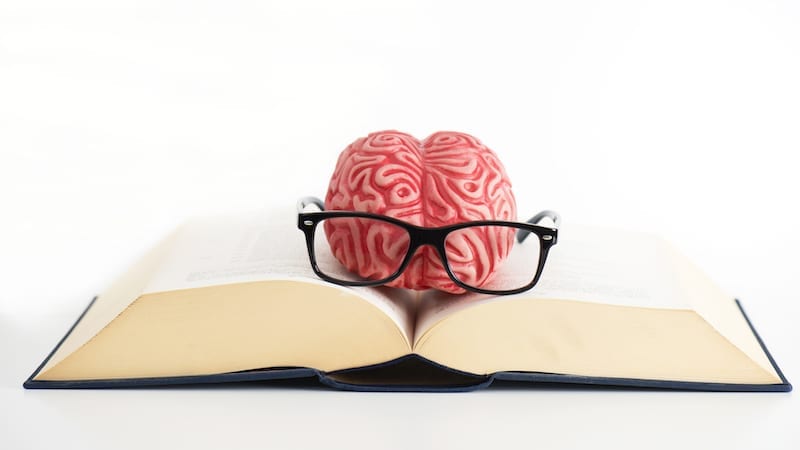Learning to read is a lot like trying to lose weight. If there were an exact science for either, everyone would be sitting around at a healthy weight happily reading the next book in the stack they keep next to their bed. Yet, we are bombarded with statements like, “It’s just calories in and calories out” or “It’s as simple as your ABCs.”
But it’s not so simple, is it? Human beings have complex issues that cannot be solved with one easy solution. So, let’s stop treating literacy as if it can be easily addressed and start training teachers to really help kids learn to read. I’ve never met a reading teacher who says, “There is only one way to teach reading.” Education professionals know what works for one child may not work for another, and that is why they must have—and use—as many strategies as possible.
Literacy training is necessary and important
When Parker B. was six years old, he sat next to me crying so hard that he began to gag and almost threw up. The reason? I was his first grade teacher, and he liked me. He liked me a lot. So, why was I shaming him by making him try to read something he clearly wasn’t ready to read? I’ll never forget this pivotal moment because it moved me from implementer to teacher. I stopped teaching reading with the one-size-fits-all program that my district prescribed and instead began to use my master’s in literacy to help him read. The next day I brought him stacks of Toon books as an apology and a promise to help him love reading again. By the end of the year, Parker was on book 42 of the Beast Quest series and could hardly remember a time when reading had made him cry. This story has a happy ending, but I’m disheartened by the knowledge that there are children who are so scarred by the reading process that they will do anything to hide their shame.
It starts with relationships
The best educators build connections with students and preserve hope. Our work is more complex than “relationships” but without relationships the other stuff doesn’t work. #TheTenMinutePrincipal pic.twitter.com/hggHErKdKm
— Evan Robb (@ERobbPrincipal) March 26, 2019
My proudest moments are when kids I’ve had before tell me I was their favorite teacher. It’s not because I need adulation; it’s because it meant we had a relationship. People do more work for people they like spending time with. Asking a child if their mother is home from her business trip yet or if the bit of egg you see on their shirt means they had a delicious breakfast tells them they matter to you and you see them.
Consider the social emotional needs of each child
https://twitter.com/CRCarter313/status/1109464747735433216
People complain that teachers these days have to parent more and more, but I’m not sure this is really true. When you learn more, you can do more. Now that we know bike helmets and seat belts can stop millions of deaths, shouldn’t we always use them? Similarly, now that we know kids have different needs, we need to work with that knowledge. Some kids will be able to get right to the literacy learning, but some kids are going to need to be fed or paid attention to or find the right chair to sit in.
Give them books that matter
Buy books & give them to the kids, people. Stop spending money on test prep workbooks. Stop cutting librarians and book budgets. Put books in kids' hands that reflect their experiences & invite them to learn about other people. It's not complicated. My #nerdybookclub post: https://t.co/zsObsAZ9bM
— Donalyn Miller (@donalynbooks) April 23, 2018
If you’re a reader, you know that amazing feeling when you read a writer’s words that speak your truth. It’s life changing, there’s no other way to put it. It’s also eye opening to learn about people who are different from ourselves. It helps us see the world as others do. Give children the diverse books they need—lots of them. Then use these books as springboards for conversations that will grow their literacy levels.
Show kids how to control their distractions so they can read
“Many of our middle and high school students simply stop reading. And our schools are a big reason why.” Nashville teacher and @ProjectLitComm founder @JarredAmato has some real solutions.#Voices4Ed https://t.co/WeCAvgSMn6
— Sharif El-Mekki (@selmekki) March 22, 2019
The world is a distracting place these days. My children tell me to turn off my notifications from work during the weekend because they notice my lack of attention to the present moment. Help the kids in your class do the same. Electronics aren’t going away, so help children use them as tools by teaching them how to take charge of their devices and apps.
Use technology wisely
New @EducEndowFoundn guidance report "Buying technology & using it effectively are very different things Unless you have a clear idea of the difference you want technology to make, it probably won't make any difference at all." Implementation, training & evaluation are key. https://t.co/Jvh0fP8HQV
— Somerset Research School (@SomResearchSch) March 29, 2019
I love technology, and on any given day in my classroom, you might find kids sprawled all over the place on iPads and Kindles. But, if you ask me, I can tell you what acts of literacy are happening all over the place. He’s reading Dory Fantasmagory with his small book club. She’s creating a how-to video about figuring out a word you don’t know as you’re reading. They’re writing a play about the book they just read. The power of technology is awesome, and it helps my students process and express their thinking about what they read. They are not consuming without thinking.
Don’t stop learning and questioning your teaching practices
(Re)envisioning and (Re)reading: Examining Problematic Texts by @debreese @Ebonyteach w/ @ProfessorNana in @ALANorg Review offers MANY insights to challenge the 'canon'! https://t.co/aJbUEwH6uq
— Center for Teaching (@CTTCB) March 23, 2019
I mean, can I get an amen for Google? I love that I can learn all day long. There is no end to what kinds of questions I can come up with, so I try hard to use that curiosity to improve my teaching. The more I know, the more I can help my students learn. There is nothing I come across that some other teacher hasn’t seen. If you’re bewildered by the kid who cannot remember the same word no matter how many times it shows up in a text, google it. The next best thing to Google is Twitter. Use Twitter for your 24-hour/365-days-a-year professional development. Join a Twitter chat to see what I mean.
Become a practitioner
In part 2, @ProfessorNana and I really hit on the idea of teacher as a practitioner, and why that makes such a big difference in the quality of instruction happening in the classroom! #G2Great #JoyfulLeaders #tlap #booklove https://t.co/AwQJa6IHUp
— Jacob Chastain (@jacobchastain_) March 25, 2019
I’m a huge fan of Teri Lesesne because she walks her talk. So it’s no surprise when I agree with her that teachers of reading and writing need to be practitioners. I’m always shocked when I leave yet another interview (or dinner party for that matter!) where no one has talked about what they are reading. I read the books I give my students. I also do the writing assignments before I teach them. This helps me in two ways. First, I have a sample to show my students, and second, I tell them what pitfalls I ran into and how I solved them, which helps them learn from my experience.
Dick Allington, professor of literacy studies at the University of Tennessee, said, “We can teach virtually every child to read. The question is this: Will we use what we know to solve the problems faced by the children who struggle to become readers?”
How is your school ensuring that students learn how to read and read well? Share with us in our Principal Life Facebook Group.
Plus, statistics about struggling readers and reading growth.

